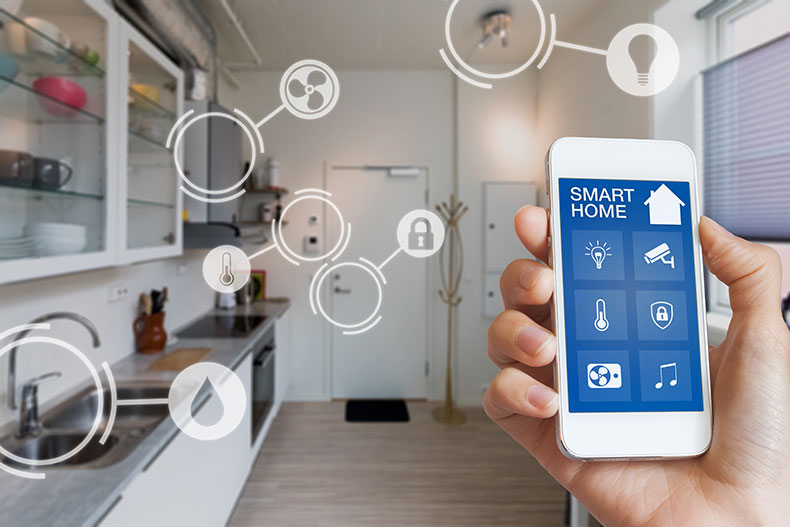What if you could automate literally any object in your home to activate by a single push of a button or a voice command? It sounds like something from the future, but through modern technology and the Internet of Things (IoT) this is a very realistic scenario today.
The Internet of Things provides the ability to transfer data over a network without requiring human-to-human or human-to-computer interaction and the data proves this industry is growing. By the end of 2019, Gartner, a leading research and advisory company, expects 14.2 billion connected objects will be in use, and that number is projected to be 25 billion by 2021. Smart watches, smart speakers, robot vacuums, lighting and security systems are just a few examples of these devices, but the possibilities are endless as technology continues to evolve.
A smart home holds great appeal to many consumers, and the technology is already in place to meet the needs of today’s tech savvy homeowners. While security concerns continue to be the largest drawback to these systems for many people, already a third of Americans now own a smart connected home device.
Smart devices offer convenience but when used correctly, can also offer real savings on energy costs for some of the largest energy users in the home such as heating and cooling, water heating, and laundry. Heating and cooling account for nearly half of all electric costs. Programmable thermostats allow the consumer to adjust the temperature of the home automatically based on a set schedule to reduce the amount of time the system is on when no one is home.
Smart water heaters are similar in that they can be turned off for periods of time when hot water is not needed, reducing the energy consumed by the appliance. And since water heating accounts for 14 percent of an electric bill, this is another opportunity to realize significant savings annually. Smart washers and dryers have special sensors designed to adjust the proper amounts of water and detergent for optimal cleaning or to dry clothes more efficiently without heat damage. And when used in conjunction with a smart home hub such as an Amazon Echo or Google Home device, smart washers and dryers can automatically run cycles during off-peak hours.
With the introduction of time-of-use rates for energy usage in 2020, smart home connectivity can hold the key to unlocking the true potential for year-round energy savings for Brunswick Electric members. With a smart home hub to connect all of your devices and smart upgrades, scheduling your energy use to work for you has never been easier.


